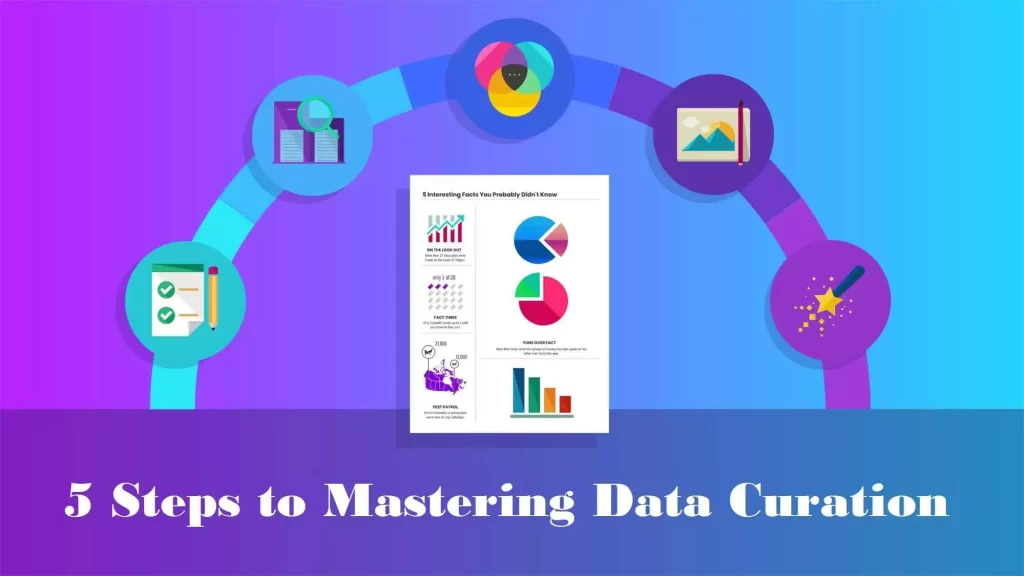Data is the driving force behind every successful business decision. From market trends to customer preferences, the insights derived from well-curated data can make or break an organization’s growth.
However, the journey from raw data to actionable insights requires careful navigation through data curation.
In this blog post, we’ll unravel the five essential steps to effective data curation, equipping you with the skills to transform your data into a strategic asset.

Step 1: Define Clear Objectives
Setting clear objectives before embarking on the data curation journey is crucial. Outline the specific insights you aim to extract from your data.
These objectives will serve as your guiding compass, ensuring that every step you take is purposeful and aligned with your business goals. Without well-defined objectives, you risk drowning in a sea of irrelevant information.
Step 2: Source and Select
With objectives in place, it’s time to source the relevant data. Cast a wide net to capture a comprehensive dataset, and then meticulously select the data that directly aligns with your objectives.
Avoid hoarding excessive data; quality always triumphs over quantity in effective data curation. Remember, not every piece of data deserves a spot in your curated collection.
Step 3: Cleanse and Standardize
Raw data often comes with its fair share of imperfections. This step focuses on cleansing and standardizing your data to ensure accuracy and consistency. Remove duplicates, correct errors, and format the data according to a consistent structure. Think of this step as tidying up your data’s room, creating a solid foundation for meaningful analysis.
Step 4: Enhance with Context
Now comes the transformative stage of adding context to your curated data. This step involves linking various datasets, enriching them with relevant metadata, and ensuring proper categorization.
By providing context, you breathe life into your data, making interpreting and extracting insights easier. Contextualized data is the key that unlocks the door to actionable intelligence.
Step 5: Maintain and Update
Data curation is not a one-time task; it’s an ongoing commitment. Regularly review and update your curated data to ensure its relevance and accuracy. Embrace the power of automation and utilize data curation tools to streamline this process. Keeping your curated data up-to-date safeguards its value and enables timely decision-making.
Summary!
Mastering the art of data curation is a skill that can propel your business toward success. By following these five steps – defining objectives, sourcing and selecting, cleansing and standardizing, enhancing with context, and maintaining – you’ll navigate the data curation journey with finesse.
Remember, data curation is the bridge between raw data and actionable insights, and it’s within your grasp to build that bridge solidly. So, take these steps, harness the potential of your data, and empower your business to make informed, strategic decisions.

George is a wonderful person. He is very nice and always willing to help out! He loves his job because it lets him share interesting things with people who want to know about new developments in the world of technology.





